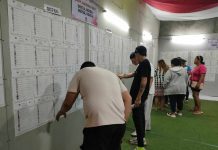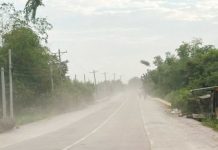 THE PHILIPPINE Council for Agriculture, Aquatic and Natural Resources Research and Development of the Department of Science and Technology (DOST-PCAARRD) has expressed its commitment to assist in increasing the competitiveness of the mussel industry.
THE PHILIPPINE Council for Agriculture, Aquatic and Natural Resources Research and Development of the Department of Science and Technology (DOST-PCAARRD) has expressed its commitment to assist in increasing the competitiveness of the mussel industry.
Dr. Dalisay DG. Fernandez, director of the Inland Aquatic Resources Research Division of the DOST-PCAARRD made the statement during the First Philippine Mussel Congress which was recently held in Iloilo City.
Through the DOST-PCAARRD’s Mussel Industry Strategic S&T Program, Fernandez shared that “efforts towards the development of processing and production technologies are being done to enable farmers to produce quality and safe cultured and processed mussel products.”
The DOST-PCAARRD’s commitment is in line with the theme of the congress, “Bigger and Safer Mussels for every Juan,” which was attended by about 150 researchers, farmers, LGUs officials and R&D administrators from different agencies working on the mussel R&D.
The College of Fisheries and Ocean Sciences of the University of the Philippines Visayas (UPV), through the support of the DOST-PCAARRD conducted the 1st Philippine Mussel Congress which aimed to share updates on improving competitiveness of mussels in the market.
Specifically, it seeks to: disseminate the results/findings of the various researches which addressed the mussel industry strategic plans under the DOST-PCAARRD’s National Mussel Science and Technology Program and other research initiatives; showcase the different mussel products and technologies; provide updates on the present status of the mussel industry; and conduct consultation with the industry stakeholders.
Low production of green mussel (Perna viridis) or “tahong” due to inadequate supply of spats or seeds has been a perennial problem in the country.
In 2014, the UPV launched the Mussel Hatchery Project, thru the funding of the DOST-PCAARRD to address such concern.
The project achieved a survival rate from early spat to spat (1cm) of 94 percent at the nursery stage.
Moreover, hatchery-produced spats transported to different culture sites as far as Aparri attained a high survival rate of up to 100 percent.
Further development and refinement work on hatchery and nursery techniques towards the establishment of seed production technology of Perna viridis are underway throughout the country.
The research results were also presented in the paper “Development of Green Mussel, Perna viridis Hatchery and Nursery Techniques in the Philippines: State of the Art” during the conference.
Likewise, the longline technology was also presented during the event.
Longline, a method for mussel production that is cost-effective in producing high quality mussel, provides higher return of investment (ROI), more production, and is more environmental-friendly.
According to Dr. Carlos C. Baylon of the UPV, this method has a higher ROI of 74 percent and a shorter payback period of two years than the raft method with an ROI of 26 perent and a payback period of three years.
Compared to the traditional stake method, which causes heavy sedimentation, longline has more benefits in green mussel production.
Specific growth rate of green mussel cultured in longline was significantly higher than those cultured in stakes, and it allowed for faster growth and attainment of marketable size. (jaypeeyap@ymail.com/PN)






